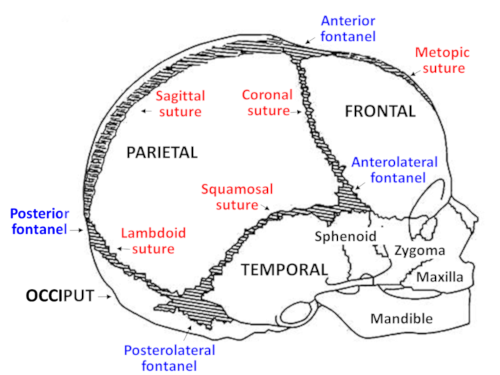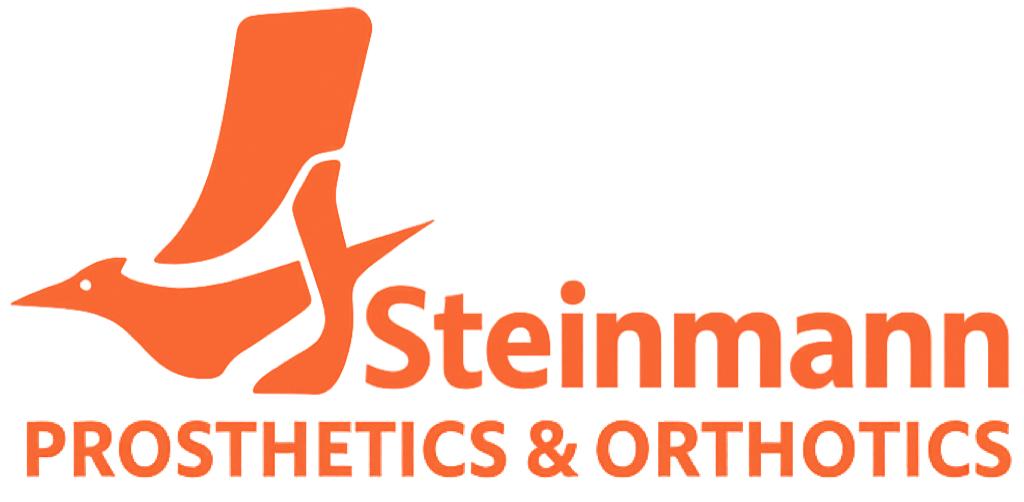Services
Head Shape Assessments
Cranial Helmets
Helping Your Baby's Head Shape
Early Evaluation for Head Shape Asymmetry
At Steinmann Prosthetics & Orthotics, we are committed to helping your baby grow strong and healthy.
We offer early evaluations for head shape asymmetry (known as plagiocephaly) for children from ages 2–3 months up to 12 months.
Your baby’s head grows fastest during their first year, and the bones of their skull are more moldable during this time. As a baby grows, their skull bones gradually harden.
Early intervention is best for head shape asymmetry. Talk to your doctor if you have any concerns about your baby’s head shape.
You don’t have to face this alone, we will work together with you and your doctor, and provide measurements and information so that you can make the best decision for your baby.
What Is Plagiocephaly?

Plagiocephaly is a very common condition.
All infants are susceptible to head shape deformity because their skull bones are naturally soft and flexible.
The skull bones are moveable, with boney plates divided by sutures, that allow the brain and skull to grow.
Sometimes the skull growth on one side is uneven and not symmetrical with the other side. There may be a flat spot, uneven skull shape, or uneven facial features.
There are many reasons why this can happen. Plagiocephaly can occur even when parents do everything right. There are many risk factors, and parents must not blame themselves.

In the majority of cases, plagiocephaly can be treated using conservative measures, which include positioning, exercise, tummy time, and sometimes physical therapy. Most asymmetric head shapes normalize as babies grow, however some cases of plagiocephaly are more resistant to conservative treatment.
What If Conservative Care Isn’t Enough?
Some cases of plagiocephaly may benefit from helmet therapy to help guide cranial growth and improve symmetry. We can provide cranial measurements to you and your doctor, and discuss possible next steps.
Why Early Evaluation Matters
Because babies’ skull bones gradually harden, there’s a limited window for correction. Early evaluation between gives your child the best opportunity for improvement — often with conservative treatment and without the need for advanced treatments.

FAQ About Plagiocephaly
Q: Is plagiocephaly dangerous?
Most cases are not dangerous but all head shape asymmetry should be evaluated early to rule out rare, serious causes.
Q: Will my baby outgrow it?
Most cases improve naturally. Some need conservative treatment (active repositioning, tummy time, and physical therapy). And some may benefit from a cranial remolding helmet.
Q: Do I need a referral for a head shape assessment?
Yes — a referral from your baby’s PCP is required for evaluation.
Q: Is scanning safe?
Yes — We use safe, FDA approved advanced 3D scanning to assess head shape. We follow American Academy of Pediatrics (AAP) and FDA guidelines.
Q: Who decides if my baby needs a helmet?
We share detailed cranial measurements with you and your baby’s PCP, and YOU decide.
Your Baby’s Journey With Us
Step 1: Referral & Appointment
With a referral from your pediatrician, we’ll schedule a gentle and timely evaluation. Our team will walk you through what to expect and answer all your questions.
Step 2: Safe, 3D Head Shape Scan
We use a painless, radiation-free laser scanner to capture your baby’s head shape in seconds — while they rest comfortably or play on your lap.
Step 3: Detailed Report & Discussion
We’ll share a custom report with you and your child’s doctor that shows key cranial measurements, shape symmetry, and recommendations.
Step 4: Personalized Support Plan
Whether it’s tummy time, physical therapy, or helmet therapy, your baby’s plan is tailored to their needs and backed by the latest pediatric guidelines.
Step 5: Ongoing Follow-Up & Encouragement
We offer continued care and check-ins to track progress and make sure you feel supported every step of the way.
Recommendations for Safe Sleep, Positioning, Tummy Time and Exercise
American Academy of Pediatrics (AAP)
Safe Sleep Guidelines
Place babies to sleep on their back (supine) and not on their stomach (prone).
This reduces the risk of SIDS and choking.
Place babies to sleep on a firm mattress, in a bare crib without pillows, toys, or bumper pads.
Do not use sleep positioners or wedges as these products are not safe and not approved by the FDA or AAP.

To reduce the risk of plagiocephaly, AAP recommends positioning, tummy time, and exercise.
Positioning
Regularly rotate your baby’s head side-to-side when resting.
Change the end of the crib where your baby’s head rests to encourage different turning positions.
Tummy Time
Helps to strengthen your baby’s neck, shoulders, and back.
Start supervised tummy time as early as possible.
Gradually work up to at least 30–60 minutes per day.
Movement and Exercise
Alternate arms when feeding or carrying your baby.
Place toys on both sides to encourage reaching and turning.
Avoid prolonged time in carriers, swings, or car seats when not traveling.
Come On In
